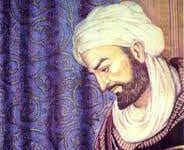Discover the life and legacy of Lady Murasaki Shikibu, the acclaimed Japanese writer of the Heian period, best known for her novel ‘The Tale of Genji’. Explore her literary contributions, cultural impact, and significance as one of the world’s first novelists.
Lady Murasaki Shikibu: Introductory
Lady Murasaki Shikibu was a Japanese writer and poet who lived in the late 10th and early 11th centuries. She is best known as the author of “The Tale of Genji,” one of the world’s earliest and greatest novels. Although much of her life is shrouded in mystery, she is considered one of the greatest literary figures in Japanese history and one of the most important women writers of the ancient world.
Lady Murasaki was born into a noble family in Heian-Kyo (modern-day Kyoto), Japan, in the late 970s or early 980s. Her father was a minor court official, and her mother was a lady-in-waiting at the imperial court. Lady Murasaki was well-educated, studying classical Chinese literature and poetry, as well as writing and music. She was also highly skilled in calligraphy and was known for her artistic talents.
In her late twenties, Lady Murasaki Shikibu was appointed as a lady-in-waiting to the imperial court. It was during this time that she began to write “The Tale of Genji.” The novel, which was written in Japanese rather than the traditional classical Chinese, is a sophisticated work of fiction that explores the lives of the Japanese nobility. It tells the story of the life and loves of the titular character, Genji, and is considered one of the first works of psychological fiction in the world.
Lady Murasaki wrote “The Tale of Genji” over a period of several years and it was completed around the year 1010. The novel was well-received by her contemporaries, who praised its realism and its subtle examination of human relationships and emotions. Despite its popularity, however, the book was not widely distributed and was not well known outside of the imperial court.
After completing “The Tale of Genji,” Lady Murasaki continued to write other works, including poetry and diaries. Her writing style was characterized by its elegance, restraint, and sensitivity, and she is considered one of the greatest stylists of classical Japanese literature.
Lady Murasaki’s personal life is largely unknown, and many details about her life have been lost over time. It is believed that she was married, but there is no record of her husband’s name or what became of him. Some scholars believe that she may have become a Buddhist nun after her husband’s death, but this is also uncertain.
In conclusion, Lady Murasaki Shikibu was a talented and accomplished writer who made a lasting contribution to Japanese literature. Her novel, “The Tale of Genji,” remains one of the greatest works of fiction in the world and is considered a masterpiece of Japanese and world literature. She is remembered as a trailblazer and a pioneering female writer, who helped to define the literary genre of the novel and paved the way for future generations of women writers. 0 0 0.
Lady Murasaki Shikibu: Biography
Introduction
Lady Murasaki Shikibu (紫式部) was a prominent Japanese writer and poet of the Heian period, known primarily for her literary masterpiece, ‘The Tale of Genji’ (Genji Monogatari). Living during the late 10th and early 11th centuries, Murasaki’s work has had a profound and lasting impact on Japanese literature and culture, earning her the title of one of the world’s first novelists.
Early Life and Background
Murasaki Shikibu was born around 973 in Kyoto, Japan, into a family of the Japanese aristocracy. Her father, a scholar of the Chinese classics, served as a provincial governor, which likely provided her with access to education and the literary culture of the time. Her given name is not definitively known; “Murasaki” is derived from a character in her own work, while “Shikibu” refers to her family’s connection to the Ministry of Ceremonial, a governmental office.
Little is known about her personal life, but it is believed that Murasaki was well-educated in classical Chinese and Japanese literature, which was uncommon for women of her time. The Heian period was marked by a flourishing of art and culture, particularly among the aristocracy, and women in the court had more opportunities to engage in literary pursuits than in previous eras.
Literary Career
Murasaki’s most significant work, ‘The Tale of Genji’, was written during her time at the Heian court, likely in the early 11th century. The novel is considered a pioneering work of Japanese literature and is often regarded as the world’s first novel. It chronicles the life and loves of Hikaru Genji, the son of an emperor, exploring themes of love, loss, and the complexities of court life.
‘The Tale of Genji’ is notable for its psychological depth and richly developed characters, delving into their emotions and motivations. The narrative is structured around Genji’s romantic entanglements and the impact of his relationships on his life and the lives of those around him. Murasaki’s use of poetic language and intricate narrative techniques set a high standard for future Japanese literature.
In addition to ‘The Tale of Genji’, Murasaki Shikibu is believed to have written ‘The Diary of Lady Murasaki’ (Murasaki Shikibu Nikki), a personal diary that provides insights into her life at court, her thoughts on courtly life, and her views on the world around her. This work, while not as widely known as ‘The Tale of Genji’, offers valuable context for understanding her life and the societal norms of the Heian period.
Cultural Impact
Murasaki Shikibu’s works had a significant impact on Japanese literature, influencing countless authors and poets throughout the centuries. Her exploration of human emotions, relationships, and the complexities of life set the groundwork for later Japanese novels and poetry. The themes and stylistic elements she employed continue to resonate in contemporary Japanese literature.
‘The Tale of Genji’ has been adapted into various forms, including plays, films, and anime, solidifying Murasaki’s legacy in popular culture. The novel has also been translated into numerous languages, allowing a global audience to appreciate its depth and beauty.
Later Life and Death
While details about Murasaki Shikibu’s later life are sparse, it is believed she remained at the Heian court for much of her life. She likely experienced the court’s intricacies and complexities, which enriched her literary work. Murasaki is thought to have died around 1014 or 1015, but the exact date remains uncertain.
Legacy
Lady Murasaki Shikibu is remembered not only as a skilled writer but also as a pioneer of the novel as a literary form. Her exploration of character, emotion, and societal norms established a foundation for future literary endeavors. The depth and sophistication of ‘The Tale of Genji’ continue to inspire readers and scholars worldwide, ensuring that her contributions to literature endure through the ages.
Murasaki Shikibu’s legacy is a testament to the power of storytelling and the importance of women’s voices in literature. She remains an iconic figure in Japanese history, celebrated for her creativity, intelligence, and the timeless quality of her work.
Lady Murasaki Shikibu: Facts
Lady Murasaki Shikibu: Facts in Brief
- Birth and Death: Lady Murasaki Shikibu was born around 973 and died around 1014 or 1015.
- Notable Work: She is best known for writing ‘The Tale of Genji’ (Genji Monogatari), often considered the world’s first novel.
- Heian Period: lived during the Heian period, a time of significant cultural and artistic development in Japan.
- Education: Coming from an aristocratic family, she was well-educated, especially in classical Chinese and Japanese literature.
- Court Life: Murasaki served at the Heian court, where she gained firsthand experience of the complexities of court life, which influenced her writing.
- Literary Style: Her writing is known for its psychological depth, intricate character development, and exploration of themes like love, loss, and the intricacies of court relationships.
- Diary: In addition to ‘The Tale of Genji’, she wrote ‘The Diary of Lady Murasaki’ (Murasaki Shikibu Nikki), offering insights into her life and thoughts.
- Cultural Impact: Murasaki’s works have influenced countless authors and remain central to the study of Japanese literature.
- Adaptations: ‘The Tale of Genji’ has been adapted into various forms, including plays, films, and anime, enhancing its cultural significance.
- Legacy: Lady Murasaki is celebrated as a pioneer of the novel and remains an iconic figure in literature, representing the voice of women in a predominantly male literary tradition.
Lady Murasaki Shikibu: FAQs
Lady Murasaki Shikibu: Frequently Asked Questions (FAQs)
Q1: Who was Lady Murasaki Shikibu?
A: Lady Murasaki Shikibu was a Japanese writer and poet from the Heian period, best known for her novel ‘The Tale of Genji’, which is often regarded as the world’s first novel.
Q2: When did Lady Murasaki Shikibu live?
A: She lived during the late 10th century and early 11th century, approximately from 973 to 1014 or 1015.
Q3: What is ‘The Tale of Genji’ about?
A: ‘The Tale of Genji’ follows the life and romantic adventures of Hikaru Genji, the son of an emperor. It explores themes of love, loss, and the intricacies of court life, providing deep insights into human emotions.
Q4: Why is Murasaki Shikibu considered a significant figure in literature?
A: She is recognized as one of the world’s first novelists, and her work laid the foundation for future Japanese literature. Her intricate storytelling and character development have influenced countless authors.
Q5: Did Lady Murasaki write anything besides ‘The Tale of Genji’?
A: Yes, she also wrote ‘The Diary of Lady Murasaki’ (Murasaki Shikibu Nikki), which provides personal insights into her life and experiences at the Heian court.
Q6: What was the Heian period?
A: The Heian period (794-1185) was a time of cultural flourishing in Japan, marked by advancements in art, literature, and courtly life. It was during this period that Murasaki Shikibu wrote her works.
Q7: What themes are prominent in Murasaki’s works?
A: Murasaki’s works often explore themes of love, the complexity of human relationships, the transient nature of life, and the beauty and challenges of courtly society.
Q8: How has ‘The Tale of Genji’ influenced modern literature?
A: Murasaki’s novel has inspired a wide range of adaptations in various forms, including films, plays, and anime. Its narrative style and character depth have influenced many authors across different cultures.
Q9: Is there any information about Murasaki’s personal life?
A: Little is known about her personal life, including her real name and exact details of her upbringing. However, she likely came from an aristocratic background and was well-educated.
Q10: What is Murasaki’s legacy today?
A: Lady Murasaki Shikibu is celebrated as a pioneering figure in literature. Her works continue to be studied, adapted, and appreciated, making her an enduring symbol of women’s contributions to literature. 0 0 0
N. B. This article ‘Lady Murasaki Shikibu Brief Biography’ originally belongs to the book, ‘Brief Biographies of Ancient Thinkers and Writers‘ by Menonim Menonimus.
Books of Biography by M. Menonimus:
- The World Writers-Brief Biographies
- Introduction to World Writers
- Introduction to World Personalities
- Love of Reputed Persons ..
Additional Searches:











